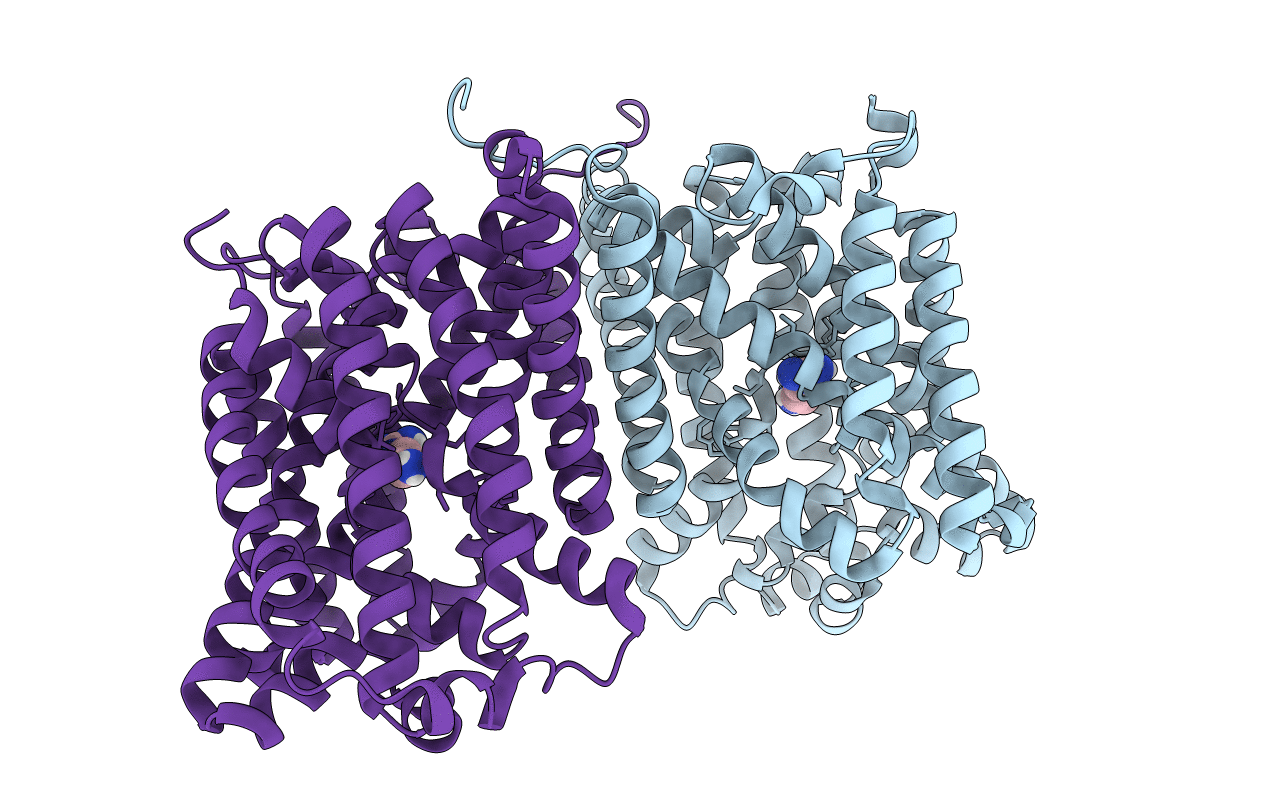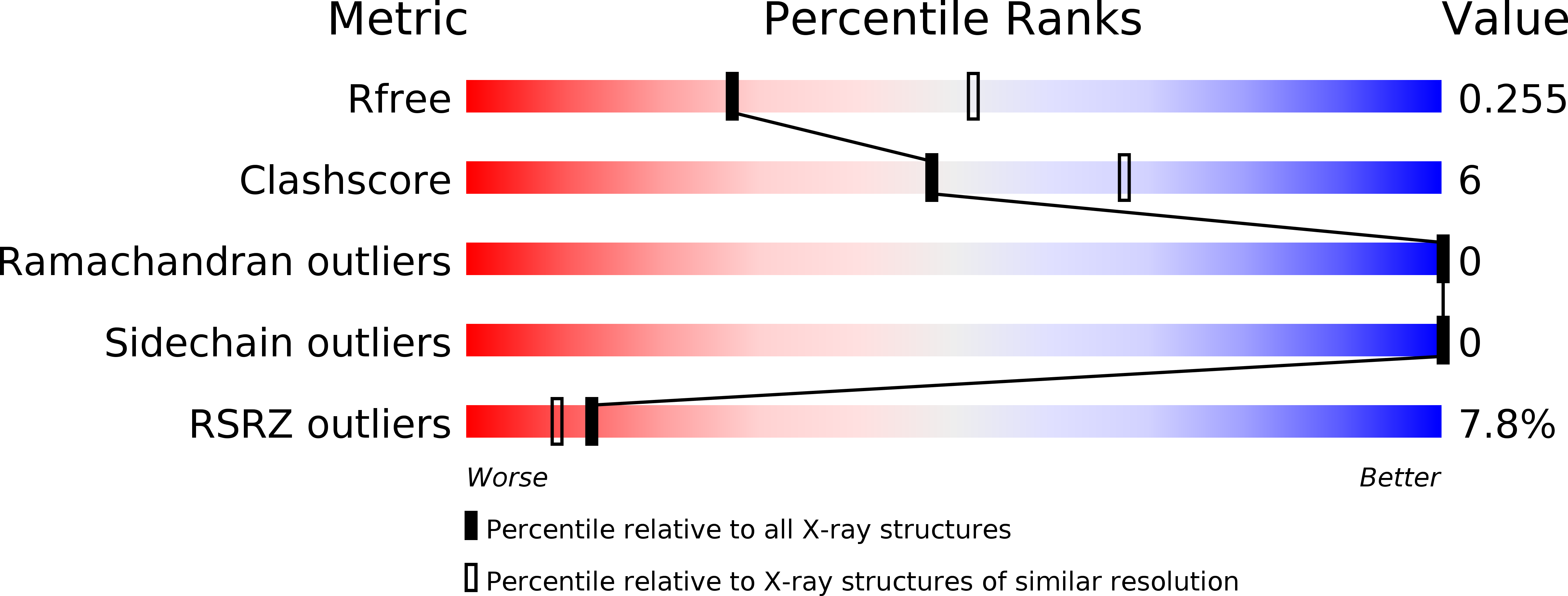
Deposition Date
2016-04-01
Release Date
2016-08-31
Last Version Date
2024-01-10
Entry Detail
PDB ID:
5J4N
Keywords:
Title:
Crystal structure of the L-arginine/agmatine antiporter AdiC in complex with agmatine at 2.6 Angstroem resolution
Biological Source:
Source Organism:
Escherichia coli O157:H7 (Taxon ID: 83334)
Host Organism:
Method Details:
Experimental Method:
Resolution:
2.59 Å
R-Value Free:
0.25
R-Value Work:
0.22
R-Value Observed:
0.22
Space Group:
P 21 21 2


